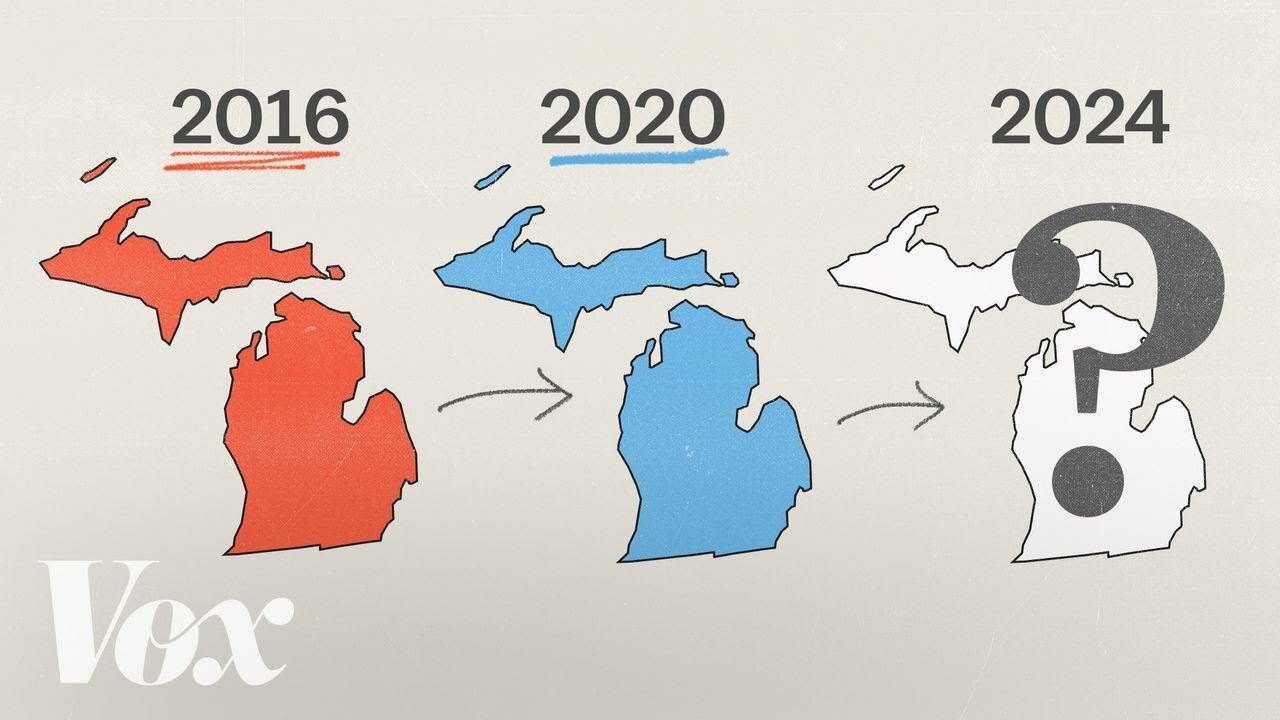Premium Only Content

How Michigan explains American politics
The “blue wall” once referred to a group of Northeast, Midwest, and West Coast states that, conventional wisdom said, “always vote for Democrats.” Unfortunately for Democrats, that was wrong, and in 2016 Donald Trump shockingly won three “blue wall” states — including, narrowly, the state of Michigan.
It maybe shouldn’t have been such a shock, though. All three of the “blue” states Trump won actually had a history of electing Republicans at the state level. Michigan in particular had been fully taken over since 2010 by Republicans, who then spent years gutting unions, restricting abortion, loosening environmental protections, and generally just turning a Republican policy wish list into law. So Trump winning Michigan was, in a way, just the culmination of a years-long drift to the right there.
But by 2022, something had changed dramatically. In a midterm election where Republicans were favored, Democrats won every branch of elected government in Michigan — governor, state House, and state Senate. The state Senate in particular had not been under Democratic control since 1984. And Democrats got busy using their new power immediately: repealing much of the right-wing legislation of the previous years, passing strong LGBTQ protections, quadrupling a tax credit for the poor, and allocating a billion dollars for the auto industry to transition to electric cars. Suddenly Michigan was cranking out more progressive legislation than almost any other state in the US.
So to recap: Michigan was once a blue state, except it wasn’t actually, and in fact over time it got pretty red, but then it became an actual blue state. (Again?) Or something like that. Obviously, the truth is that Michigan is a swing state. But the story of each of those swings is actually key to understanding how US politics work in the 2010s and 2020s. And it can tell us a lot about our next election, too.
Chapters:
0:00 The blue wall
2:42 Maps
4:52 The bellwether
9:51 Exit polls
13:08 2022
15:43 Michigan and the US
Correction: the timeline incorrectly shows Republicans winning control of the state House in 2006. Democrats won the House that year.
Sources:
For Michigan election data we drew from two useful websites from the Michigan Department of State. First, they have election results down to the county level going back to the late 90s: https://www.michigan.gov/sos/election...
They also have a tool that produces election results down to the city/township level: https://miboecfr.nictusa.com/cgi-bin/...
To show national and statewide exit polls over time, we used NBC News’s data — they’re among the only organizations whose granular exit poll results both nationally and statewide going back a decade are still publicly available.
-
 1:07:47
1:07:47
Dad Dojo Podcast
13 hours ago $0.02 earnedEP40: Conspiracies Revealed
2.52K1 -
 2:10:55
2:10:55
FreshandFit
10 hours agoAndrew Branca And Donovan Sharpe COOK Some Dumb Hoes!
175K93 -
 22:26
22:26
Liberty Hangout
11 hours agoAnti-Trumper Has Complete Meltdown
18.6K43 -
 2:21:24
2:21:24
Badlands Media
13 hours agoDevolution Power Hour Ep. 374: Declassified Intel, Trump’s Traps, and the Optics of Collapse
129K37 -
 2:00:38
2:00:38
Inverted World Live
8 hours agoWhite House Boosts the AI Revolution | Ep. 79
44.7K13 -
 10:23:56
10:23:56
Dr Disrespect
17 hours ago🔴LIVE - DR DISRESPECT - 10 WINS CHALLENGE - BIG ANNOUNCEMENT AT 12PM PT
159K20 -
 1:35:15
1:35:15
Man in America
11 hours ago🚨 ALERT: Hospitals in the U.S. Are KILLING Patients… for Their Organs!
65.8K24 -
 2:36:28
2:36:28
I_Came_With_Fire_Podcast
15 hours agoObama's Treason, Trade War: Season Infinity, and Hunter's Pipe Dream
30.7K1 -
 2:52:51
2:52:51
TimcastIRL
8 hours agoObama Referred To DOJ For TREASON, Criminal Investigation, CIVIL WAR!! | Timcast IRL
232K142 -
 9:43:32
9:43:32
RalliedLIVE
15 hours ago $9.38 earned10 WINS WITH THE SHOTTY BOYS
110K7